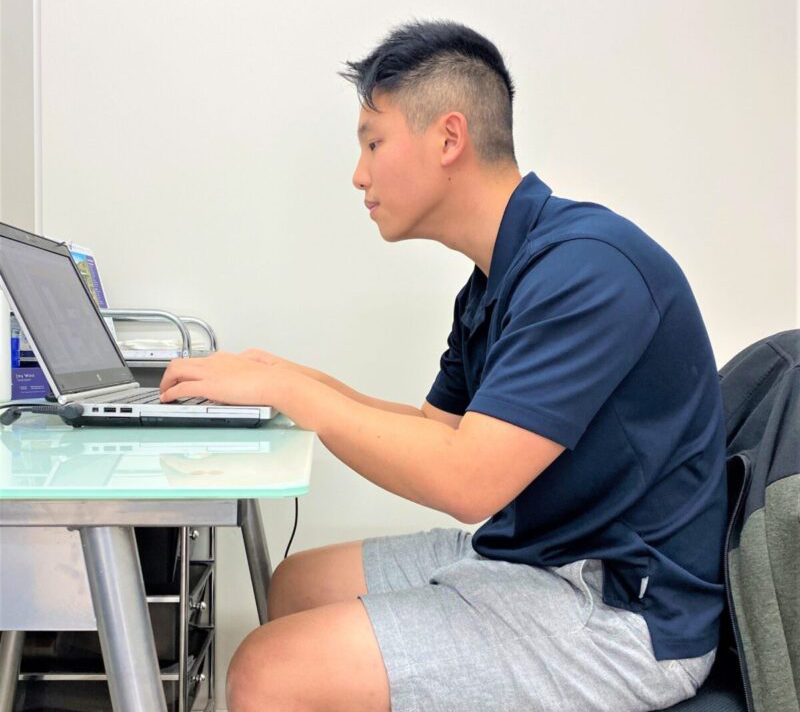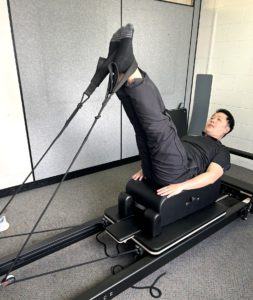-
Neck pain and Posture
In recent weeks many of us have experienced a change in our work environment, home environment and changes to our daily activities. We might have found ourselves slouched on the couch more often or working from home with a different and less comfortable or ergonomically correct desk set up. The impact of busy lifestyles, sustained or repetitive postures and the use of digital devices increases the risk of pain in the neck and shoulder region as well. As a result it is important to take steps to manage our posture to prevent the onset of neck pain. Neck pain can manifest in many different ways, headaches, upper back pain, stiffness, jaw pain, shoulder pain or aches. Although there are several causes of neck pain, most commonly it is associated with postural stresses and strains.

So how do these factors cause neck pain?
The most common postural issues we see are forward-leaning head placement, rounding of the shoulders and hunched upper back. The continued tension being placed on certain muscles can develop into muscular trigger points or “knots”, and myofascial tightness which in turn can put a strain on both joints and ligaments. The body is capable of managing a certain load for a period of time, but once it reaches its limit, pain and tightness start to develop.
How can you help reduce your neck problems?
Reviewing your desk set up is one way to address your neck problems;
- Your monitor should be roughly arm’s length away from you with the top of your screen at eye level. If the screen is too low you will angle your head downwards and increase the strain on your neck.
- As your head is the heaviest part of your body even a slight forward head position can add considerable strain to the muscles at the back of the neck. Whether you are using a phone or computer, ensure thar your head is sitting between your shoulders.
- Your chair should be supportive and comfortable and allow your lower back curve naturally inwards and upper back remain in a straight line. Try and sit your hips to the back of the chair and keep your feet flat on the floor and your thighs parallel to the ground. If your chair has armrests make sure to use them and keep your shoulders relaxed.
Studies have shown that changing position or taking a quick break every 30 minutes can alleviate neck discomfort. This can be taking a bathroom break, moving your neck and shoulders or practicing some gentle stretches.

How can Physiotherapy help?
Physiotherapy can help by identifying the problem and formulating a plan of action. Sometimes some areas of the body can become tight and sore while other muscles are weakened so advice from a physiotherapist can balance out these key areas. Techniques such as joint mobilisations, soft tissue release, dry needling and acupuncture by your physiotherapist can help with managing acute neck pain and headaches.
We must be aware of our posture, our surroundings, and limiting poor and static positions to prevent the onset of pain and injury. Neck pain is usually best avoided; however, if you are struggling with a bout of neck pain, please get in touch as physiotherapy can offer a range of modalities to alleviate you pain both short term and for prevention of reoccurances in the future.

Neck pain and posture
- Post author:Triumph Physio
- Post published:26/07/2020
- Post category:Physiotherapy
Tags: neck pain, physical therapy, physio, Physiotherapy, posture, rehab, rehabilitation, sitting posture



